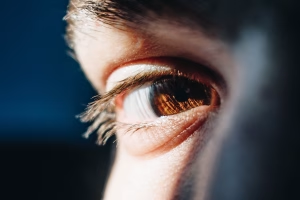Dry Eyes and Painful Heads: Understanding the Linkage
Aching eyes and headaches are prevalent issues that frequently seem unconnected, yet for numerous people, they emerge collectively or are intertwined. Experiencing dry eyes—characterized by an experience of irritation, burning, or a gritty feeling—at times arrives along with headaches. The underlying association between these two conditions lies in several shared causes, like eye strain, environmental triggers, and even specific medical circumstances that impact both the eyes and the head.
Comprehending the relationship between dry eyes and headaches can help people manage the two issues more successfully. While these troubles may have distinct origins, recognizing when they are intertwined can guide to enhanced therapies and progress overall well-being.
The Affiliation Between Dry Eyes and Headaches
Parched eyes generally arise when the eye’s tear generation is insufficient or the quality of tears is inadequate. This results in irritation, discomfort, and, in some cases, swelling. Headaches, alternatively, can be induced by a diversity of factors, such as stress, tension, dehydration, or eye strain.
Though the two may seem like separate matters, there are several ways in which they can be interconnected:
Eye Strain and Tension Headaches One of the most prevalent causes of headaches related to dry eyes is eye strain. When the eyes are dry or irritated, they necessitate more effort to focus and maintain clarity of vision.
This additional strain can trigger tension headaches, particularly in individuals who engage in activities that require prolonged visual concentration, like reading, using a computer, or looking at a phone for extended periods.
The uneasiness caused by dry eyes can cause folks to squint or blink more frequently, which can add to muscle strain around the forehead, temples, and neck—common areas impacted by pressure headaches. The outcome is a vicious cycle where eye discomfort exacerbates headache signs, and vice versa.
Many people today spend hours staring at screens, significantly contributing to both dry eyes and headaches in our electronic age.
This sensation is known as digital eye strain or computer vision disorder (CVS). When using digital gadgets, people tend to blink less frequently, causing tears to evaporate more quickly, leading to dryness and irritation.
The blue light emitted by displays can also add to eye fatigue, further exacerbating both dry eyes and headaches. The longer one spends facing a screen, the more likely it is for eye strain to lead to headaches. The blend of reduced tear production, insufficient lubrication, and increased focus on screens can intensify both dry eyes and headache symptoms.
Dehydration is another common factor that connects dry eyes and headaches. Both conditions can be exacerbated when the body is not adequately hydrated. Dehydration can lessen the production of tears, leading to dryness, while also causing the brain to shrink slightly, which can lead to tension in the head and result in a headache.
Staying hydrated is essential for maintaining healthy eye function and preventing both dry eyes and headaches from occurring or worsening.
Environmental Factors Environmental conditions can irritate the eyes, causing them to dry out. Dry, heated indoor air can also contribute to headaches by potentially dehydrating us or exacerbating sinus issues. In some situations, allergens present in the environment, like pollen, dust, or pet dander, are able to lead to both dry eyes and sinus headaches.
Underlying Conditions Connecting Dry Eyes and Headaches
A number of health-related states and medical circumstances can make a person more susceptible to experiencing both dry eyes and headaches simultaneously. These conditions are capable of inducing or worsening the signs of both disorders:
Migraine Migraines are a neurological condition frequently characterized by severe headaches, nausea, and sensitivity to light and sound. Migraine sufferers sometimes encounter dry eyes as part of their symptoms.
During a migraine attack, tear production can decrease, leading to dryness and discomfort. What’s more, the intensity of a migraine can make it more challenging to focus one’s eyes fully or open them, which can exacerbate both eye strain and headache symptoms.
Chronic Fatigue Syndrome (CFS) Chronic fatigue syndrome is a condition characterized by prolonged, unexplained fatigue that does not improve with rest. People with CFS tend to report eye-related symptoms, such as dryness, irritation, and light sensitivity.
These symptoms can be associated with the fatigue that comes with the condition, which can also contribute to developing headaches. The physical strain of coping with constant exhaustion and discomfort may trigger tension headaches or migraines.
Sjögren’s syndrome is a perplexing autoimmune affliction wherein the body’s immune system bafflingly assaults its moisture-producing glands, inevitably leading to parched eyes and a dry mouth. This condition regularly brings noteworthy discomfort owing to a diminution in tear creation.
Sjögren’s syndrome can also induce migraines, either as a consequence of the desiccated eyes or owing to the heightened stress on the body from managing the disease. Individuals with Sjögren’s occasionally find that their arid eyes and headaches are intimately linked, frequently encountering both simultaneously.
Hormonal Fluctuations Hormonal variations, particularly those related to menopause, pregnancy, or the utilization of birth control pills, can impact the body’s tear generation.
Diminished estrogen levels can lead to more parched eyes, and these hormonal changes may likewise add to the advancement of migraines. The combination of dry eyes and hormonal headaches can make overseeing both conditions more testing.
Managing Dry Eyes and Headaches
Managing both dry eyes and headaches necessitates a comprehensive approach that addresses the underlying causes and diminishes manifestations. Effective treatment may involve:

Eye Drops and Lubricants
Synthetic tears and lubricating eye drops can help relieve the discomfort of dry eyes by supplementing the natural tear film and furnishing hydration. Preservative-free drops are often prescribed for those with chronic dry eyes. For more extreme cases, gel-based drops may provide longer-lasting relief.
Regular Breaks from Screens
To fight digital eye strain, people should practice the 20-20-20 rule: every 20 minutes, take a 20-second break and gaze at something 20 feet away. This helps relax the eye muscles and reduces the risk of developing dry eyes and headaches. Additionally, reducing screen time or using screen filters to decrease blue light exposure can help alleviate strain.
Proper Hydration: Maintaining adequate hydration is crucial for overall health, including eye and brain function. While water intake is important throughout the day, it is especially essential to drink plenty after waking up and during times of high stress, as dehydration is a common trigger for dry eyes and debilitating headaches alike.
Managing Allergies and Environmental Triggers: Using a humidifier, especially in overly dry indoor areas and seasons, can help reduce environmental factors that exacerbate dry eye symptoms and headache frequency.
Likewise, minimizing direct exposure to vents blowing heated or cooled air offers relief. For those whose dry eyes and headaches stem from allergies, antihistamines or specialized eye drops may substantially alleviate uncomfortable sensations.
Pain Management Strategies for Headaches: Over-the-counter pain relievers like ibuprofen have proven effective at treating headache pain caused or compounded by dry eyes. However, in cases of severe or chronic head pain, prescription medications tailored to specific headache types, such as migraines, are sometimes necessary to endure complete remission of symptoms.
Routine Eye Exams: Frequent visits to an optometrist allow for ongoing monitoring and management of dry eye severity. Furthermore, if headaches persist or intensify notwithstanding self-care, consulting a physician enables identification and care of any underlying health issues contributing to discomfort. Timely treatment ensures preservation of ocular and cranial wellness.




Leave a Reply